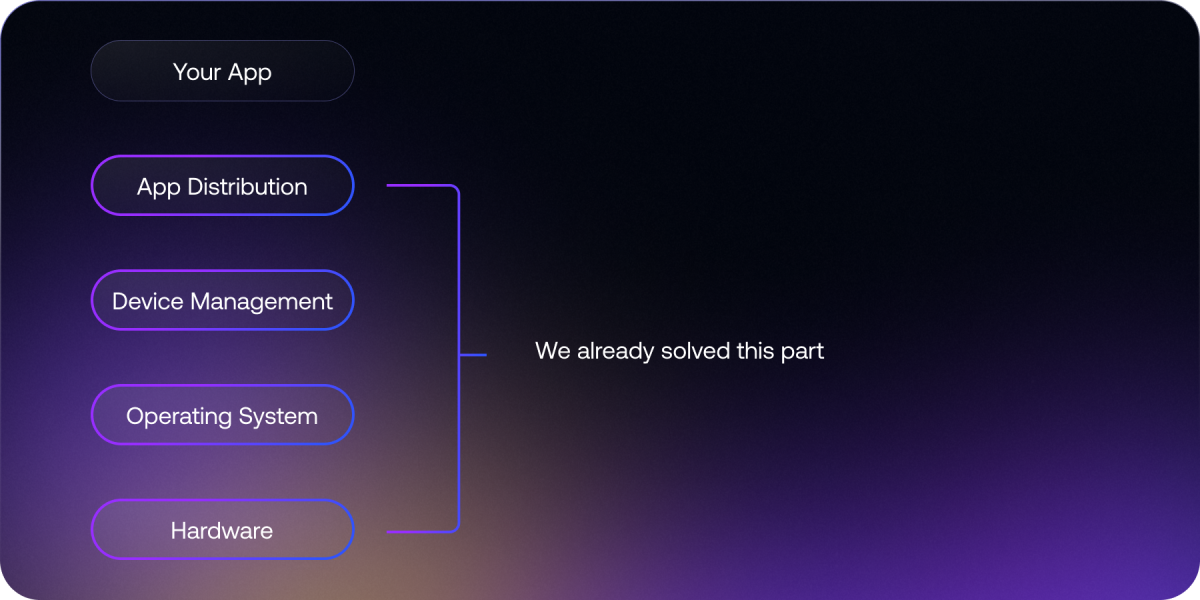
Screenly Launches Headless-Serverless Edge Apps Solution Tuned To 3rd-Party Software Developer Needs
August 31, 2023 by Dave Haynes
London-based CMS software firm Screenly has launched a variation on its platform called Edge Apps, expanding on the idea of headless CMS solutions that use the bones of a platform but leave the presentation and transactional layer to the customer’s software team.
CEO Viktor Petersson walked me through what he was planning when when we met for lunch at the start of the year, a stop on my way over to ISE in Barcelona. Now Edge Apps is live and available to customers as a new option, at no extra cost.
He told me at the time he was angling his software towards something that met the work styles and needs of software developers who want to code their own solutions using their own tools and functionality, and not be constrained by digital signage CMS platforms that are designed and coded to work in more rigid ways.
Screenly is particularly known in the digital signage industry for standardizing on Raspberry Pis as its media players, though it now also has an anIntel-based “Max” player aimed at high-needs enterprise jobs.
From PR on Edge Apps:
A completely new developer framework, custom built for screens. Think of it like a turnkey screen operating system in a way.
Unlike traditional web content, Edge Apps operate directly on the device, ensuring seamless playback. Even when the internet is down. Additionally, the locally served content delivers exceptionally fast loading times.
I asked Petersson about how local content storage is different from other CMS solutions that “cache” content and instructions locally.
It’s different compared to regular web content caching (that other providers offer). For regular web content, you only have limited caching abilities in the browser. With Edge Apps, content is synced to the device and served locally. This is a very important detail as it both enables content to work when there’s a lack of connectivity, as well as for performance reasons (you have essentially millisecond load time).
A good analogy for this is just a regular Chrome browser. It has caching, but try disconnecting from the network and reload the page. With Edge Apps, this works.
For Edge Apps that relies on 3rd party services (such as the weather data in our Weather app), we make use of local caching to survive network connectivity issues. We have basic functionality for this already working, but are going so improve it even further going forward.
More from PR:
But the benefits of Edge Apps go beyond their fundamental features. Let’s explore some key advantages:
- Rich Metadata: Edge Apps automatically incorporate unique metadata, enabling logic based on precise GPS coordinates, screen names, or tags.
- No Hosting Required: Edge Apps run directly on the device, eliminating the need for hosting servers, associated costs and perhaps equally importantly, removing a critical Single Point of failure (SPoF).
- Hardware Integration: Unlike regular web pages, Edge Apps allow interaction with the physical world. You can interface with hardware like buttons, sensors, and local services like your own ERP system. (Coming Soon)
- Modern Workflow: Developed with modern developers in mind, Edge Apps offer an effortless workflow. You can build, test and push apps using our Command-Line Interface (CLI). This is then easily integrated directly into your CI/CD pipeline.
A main proposition for Edge Apps is the idea that a developer being asked to, for example, develop a self-service display interface for restaurants has to not only sort out the UX and flow, but think about all the components that are the underpinnings of these services, like app distribution and device management.
Now here is the good news. We’ve already solved all of these problems. Over the last decade, we’ve built what is arguably the most secure digital signage platform in the industry. It has always been severely over-engineered for just showing images, videos and web pages. Which is why we are able to enter the next phase of Screenly: opening up our screen platform to developers.
With Edge Apps, you can focus on what actually matters to your business: namely the application and business logic. Everything else can be delegated to us. You can sleep soundly knowing that security updates are applied automatically, and you can invest all of your resources in driving customer value rather than figuring out how to manage all these devices in the wild.
The service is already compatible with Screenly Players, and the service includes some conmon, pre-built apps that are ready to use or work in, such as time, weather, RSS and QR code support.
A good example of the developer-centric focus of Edge Apps is a reference in PR about how using the service is “very similar to working with Heroku or Cloudflare Workers.”
I dunno what that entails, but coders would. Screenly has an Edge Apps Playground on GitHub.
Hat Tip to Petersson or a PR handler who got news of the new product profiled on heavily-read Tech Crunch.



I am compelled to mention that Intuiface achieves the same type of “serverless edge” deployment using a no-code app creation approach – i.e. no developers are required. For over a decade, Intuiface customers have created experiences that run in our cross-platform runtime (Player), enabling offline use, peripheral integration, and cloud connectivity. And it’s ISO 27001 certified. With Player Next Gen (our creative name for the next-gen of Player), we have added the ability to deploy these no-code apps to the web, running interactive content in a browser or as a Progressive Web App – which also permits serverless execution (offline use) on tens of different kinds of OS.